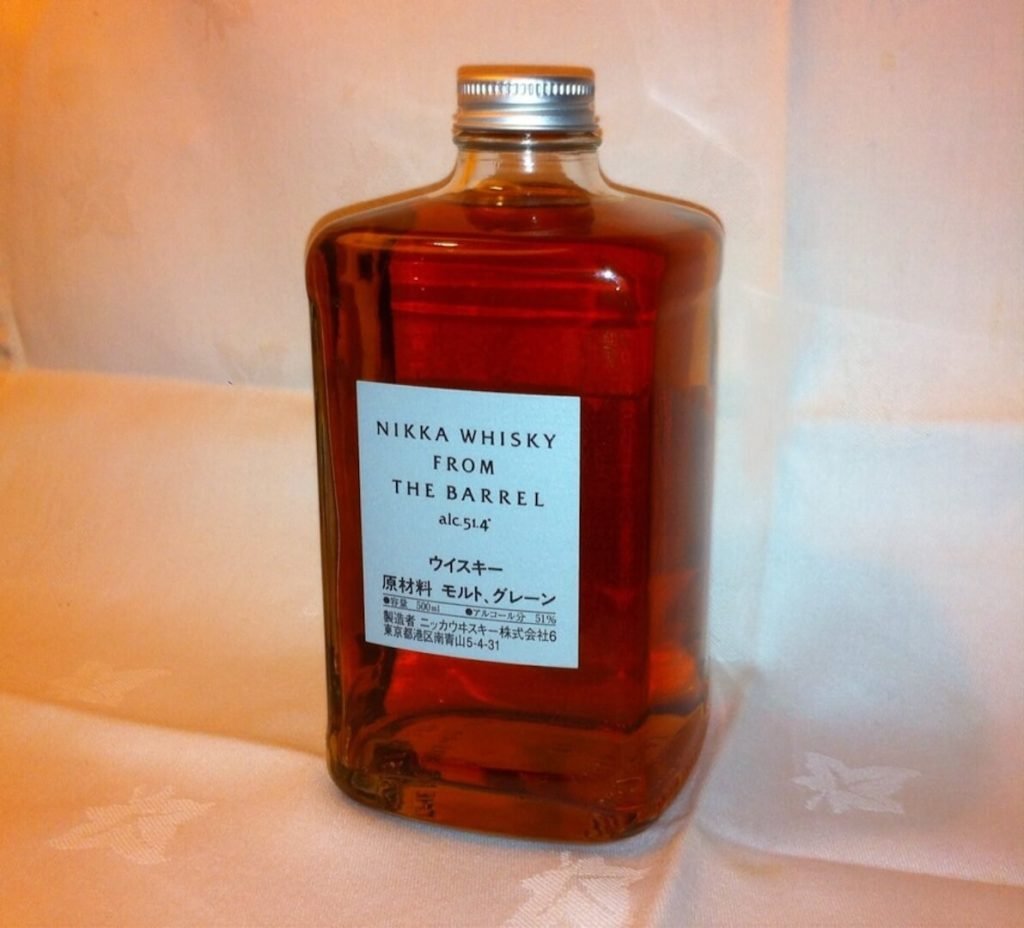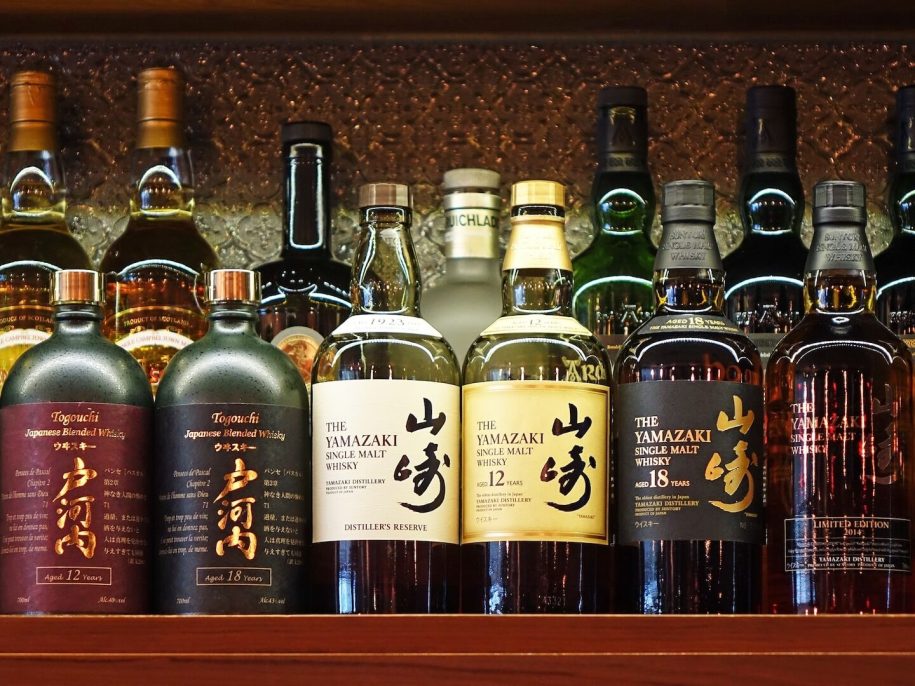Japanese whisky (spelled without an ‘e’ in the Scottish style) was once a novelty in the whisky-drinking world, enjoyed by few drinkers outside of Japan, but it has risen remarkably in stature over the past decade, winning industry awards and commanding respect from even the most serious-minded whisky traditionalists.
Japanese whisky distilling brings together the meticulous craft of Scottish whisky-making and Japan’s tendency for innovation. There was a seismic shift in the spirits world when a Japanese whisky claimed the title of the world’s best whisky in 2014, challenging the long-held Scottish dominance. This accolade marked the beginning of a new era. Now, even in the specialist whisky pubs of Glasgow and Edinburgh, Japanese whiskies take pride of place on the gantry.
Japanese whiskies are no longer just a curious alternative to scotch but a preference for many. As we delve into the world of Japanese whisky, we will uncover a story of passion, tradition, and the relentless pursuit of excellence. Pour yourself a drink, and let’s explore Japan’s contribution to the wonderful world of whisky.
And if you’re a food and drink connoisseur traveling in Japan, be sure to explore Pinpoint Traveler’s Food and Culture Tours. We offer expertly guided tasting tours in Osaka, Tokyo, Kyoto, and Hiroshima.

The History of Japanese Whisky
The story of Japanese whisky began in the early 20th century, primarily shaped by two pioneering individuals. In 1918, Masataka Taketsuru embarked on a journey to Scotland, where he apprenticed at Scotch whisky distilleries. There, he acquired in-depth knowledge and skills in the art of whisky distillation.
Returning to Japan in 1923, Taketsuru teamed up with Shinjiro Torii. Their collaboration led to the establishment of the Yamazaki Distillery in Osaka, laying the foundation for The House of Suntory and producing Japan’s first commercial whiskies.
Their partnership, however, was not to last. Taketsuru believed that the climate of Hokkaido, Japan’s northern island, was more akin to Scotland’s and, therefore, more suitable for whisky production. Contrarily, Torii favored Yamazaki’s proximity to key markets. This divergence in vision led Taketsuru to establish the Yoichi Distillery in Hokkaido in 1934, forming Nikka Whisky. Thus, two of Japan’s whisky giants, Nikka and Suntory, emerged. Today, they dominate nearly 90% of the Japanese whisky market.
Suntory expanded its reach by opening the Chita Distillery in 1972, specializing in grain whisky, and the Hakushu Distillery in 1973 to explore variations in single malts. Nikka complemented its portfolio with the Miyagikyo Distillery in 1969, offering whiskies with a mountainous nuance.
The Distillation Process
Japanese whisky distillation begins with selecting high-quality grains, usually barley, which are malted, mashed, and then fermented. The malted barley is dried, often over peat, which imparts a unique smokiness to the whisky — a practice borrowed from the Scots.
Distillation occurs in copper pot stills, another nod to Scottish whisky production. However, Japanese distillers often experiment with still shapes and sizes to create distinct flavor profiles. The distilled spirit is then aged in wooden casks. The type of wood and the aging period greatly influence the final taste. Japanese distilleries frequently use Mizunara oak, indigenous to Japan, known for adding complex, spicy, and incense-like notes to the whisky.
A significant aspect of Japanese whisky production is the attention to detail and the pursuit of perfection. Distilleries are often located in regions with unique climatic conditions that influence maturation. For example, the cooler climate of Hokkaido, the humid environment of Kyoto, and Japan’s mountainous regions all impart different characteristics to the whisky.
Innovation is also key. Japanese distillers have been known to experiment with yeast strains, fermentation times, and different types of barrel aging, constantly seeking to refine and enhance the flavor profiles of their whiskies.
Japanese whisky has been successful because producers rarely stray from the core tenet that good whisky will be achieved when you ensure high standards in ingredients, technique, distillery management, and casks. As simple as that may sound, Japanese producers are renowned for the painstaking care they bring to each production stage, guaranteeing a consistency often lacking in the younger whisky markets trying to elbow their way onto the international scene.
Key Characteristics of Japanese Whisky
The flavor spectrum of Japanese whisky is diverse, ranging from light and floral Irish-style whiskies to robust and peaty bottlings that wouldn’t be out of place on Islay.
Some whiskies are characterized by their delicate fruitiness and floral notes, often with a hint of sweetness. Others can exhibit deeper, more intense flavors, including rich malt, oak, and smoky undertones, particularly those aged in Mizunara oak barrels.
As mentioned above, Japan’s varied climate plays a significant role in these flavor profiles. The different regions where distilleries are located – from the snowy north of Hokkaido to the more temperate southern regions – contribute to distinct maturation processes, affecting the whisky’s taste and aroma.
The purity of the water used in the production process is also crucial. Japan’s natural springs and volcanic-filtered water sources are often credited for the soft and clean taste of many Japanese whiskies.
However, identifying a quintessential ‘Japanese taste’ is not as easy to do as it is for, say, Indian or Irish whiskies. Whether you like full-bodied, smoky drams or something sweet and subtle, you’ll find it on the Japanese whisky market.

How to Best Enjoy Japanese Whisky
Enjoying Japanese whisky is an experience that involves engaging all the senses. To fully appreciate its complex flavors, follow these general guidelines:
- Assessing the Color: Observe the whisky’s color in a clear glass. The depth of color can give clues about the age and the type of cask used for aging.
- Nosing the Whisky: Allow the whisky to breathe by swirling it gently in the glass. Take in the aroma, or ‘nose’, which can range from floral and fruity to rich and smoky, depending on the whisky.
- Initial Taste: Sip the whisky and let it coat your palate. Notice the first flavors that emerge. Is it light and sweet, or rich and full-bodied?
- Exploring the Flavor: Hold the whisky in your mouth for a moment to explore its full range of flavors. Pay attention to how it evolves – does it start smooth and then reveal a spicy, peaty, or fruity undertone?
- The Finish: Consider the aftertaste, or ‘finish’. A longer finish often indicates a more complex and high-quality whisky. Reflect on the lingering flavors and how they balance with the initial taste.
- Adding Water or Ice: Some enthusiasts prefer to add a few drops of water to open up the flavors, especially for higher-proof whiskies. Ice can be added to cool and slightly dilute the whisky, though it may also dampen the flavors.
Remember, the best way to enjoy Japanese whisky is the way that most pleases your palate. Whether neat, with water, or on the rocks, it’s all about personal preference and exploring Japanese whiskies’ unique taste profiles. Treating yourself to a fine whisky should never feel like work!
This is the same spirit our local guides bring to our Japan City Tours — it’s about enjoying new experiences in a sociable, relaxed environment.

Some Recommended Japanese Whiskies
Nikka Days
A blend from one of Japan’s whisky giants, Nikka Days is an easy-drinking option (what the Scots sometimes call a “breakfast whisky”). It’s light in both aroma and flavor, making it perfect for whisky beginners.
Taketsuru Pure Malt, Nikka
This is a unique whisky, differing from traditional Scottish malts. The initial intense smokiness gives way to an almost bitter finish, making it an intriguing choice for those wanting to explore more complex flavors.
Hakushu 12-Year Old Single Malt
A product of the Japanese Alps, this single malt is known for being woody on the nose, with underlying notes of winter fruits and a jot of peat. This is certainly at the more approachable end of peated whiskies. If you’ve tried Islay whiskies, like Laphroaig and Ardbeg, and found them too intense, don’t let that dissuade you from sampling this refined Japanese malt.
Nikka Coffey Grain Whisky
Named after the inventor of the continuous still, this whisky is primarily corn-based, diverging from the typical barley use. It offers a full-bodied texture with lots of sweetness — a good choice for regular bourbon drinkers.
From the Barrel, Nikka Whisky
Nikka’s flagship blended whisky, From the Barrel showcases the brand’s flavor spectrum in a balanced and accessible manner. Though this whisky’s easy-drinking character doesn’t mean it lacks complexity. For many whisky aficionados, this is their go-to Japanese bottle.
Hibiki Japanese Harmony, Suntory Whisky
A sophisticated blend from Suntory. Japanese Harmony combines malt whiskies from Yamazaki and Hakushu with sweet grain whisky from Chita. It’s light but carries depth, with notes of summer fruits and honey.
Explore Japanese Food Culture with Pinpoint Traveler
As you can see, there’s much to explore with Japanese whisky. Whether you’re a regular whisky drinker looking to splash out on a rare malt or a curious traveler hoping to try Japanese whisky for the first time, you’ll find a dram to suit your tastes.
If you are exploring Japan and would like an authentic cultural experience in the company of expert local guides and like-minded travelers, please explore our Japan City Tours.
If you have any questions, please get in touch.


Leave a Reply